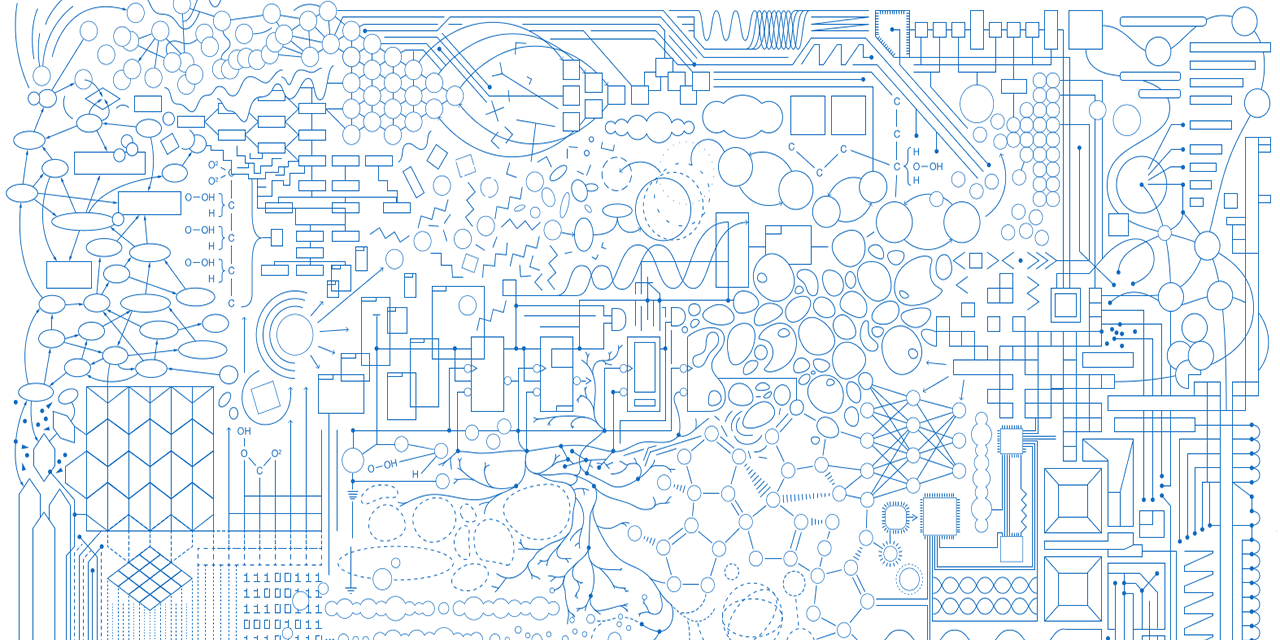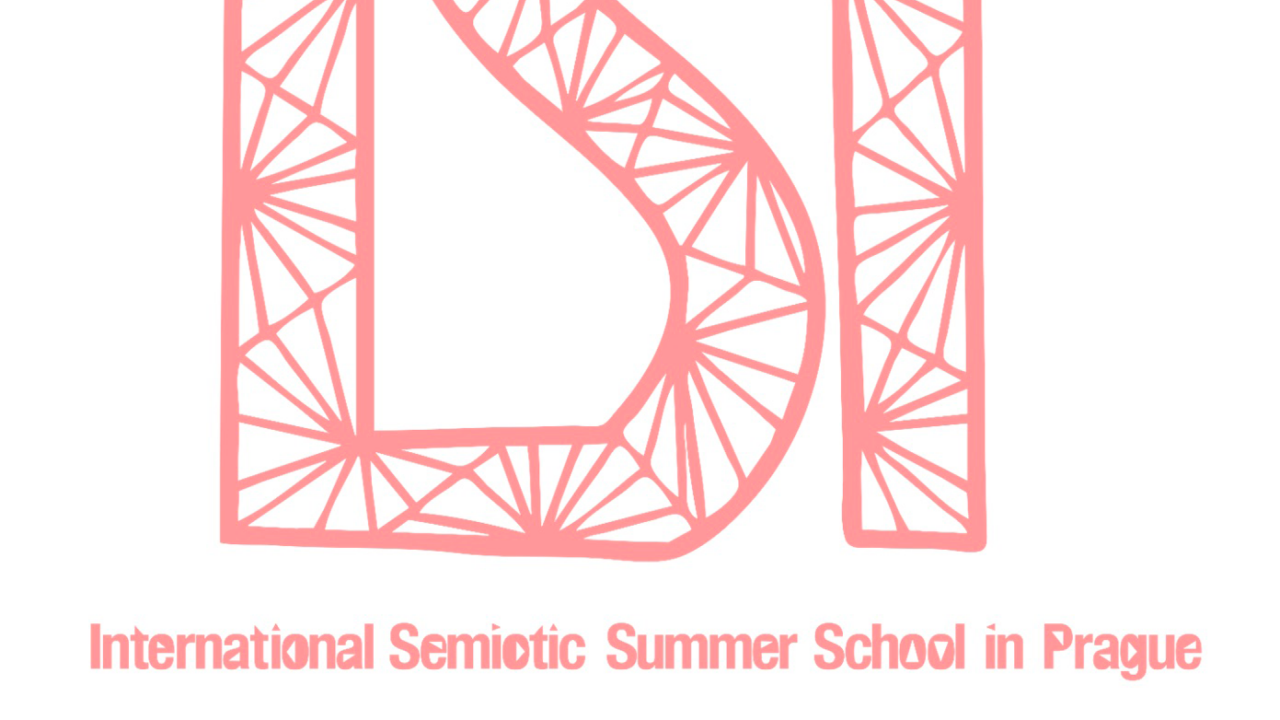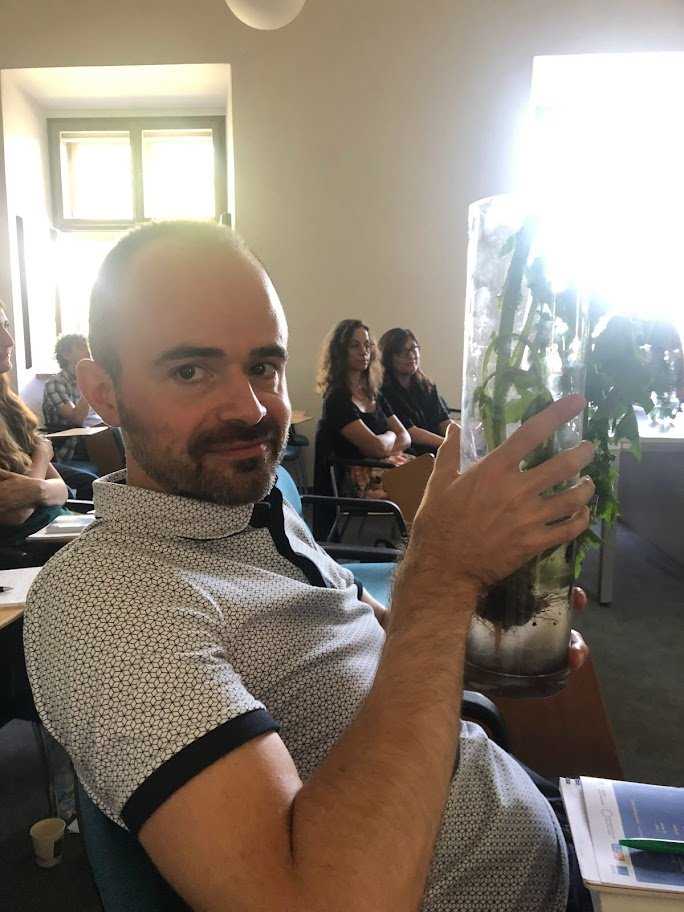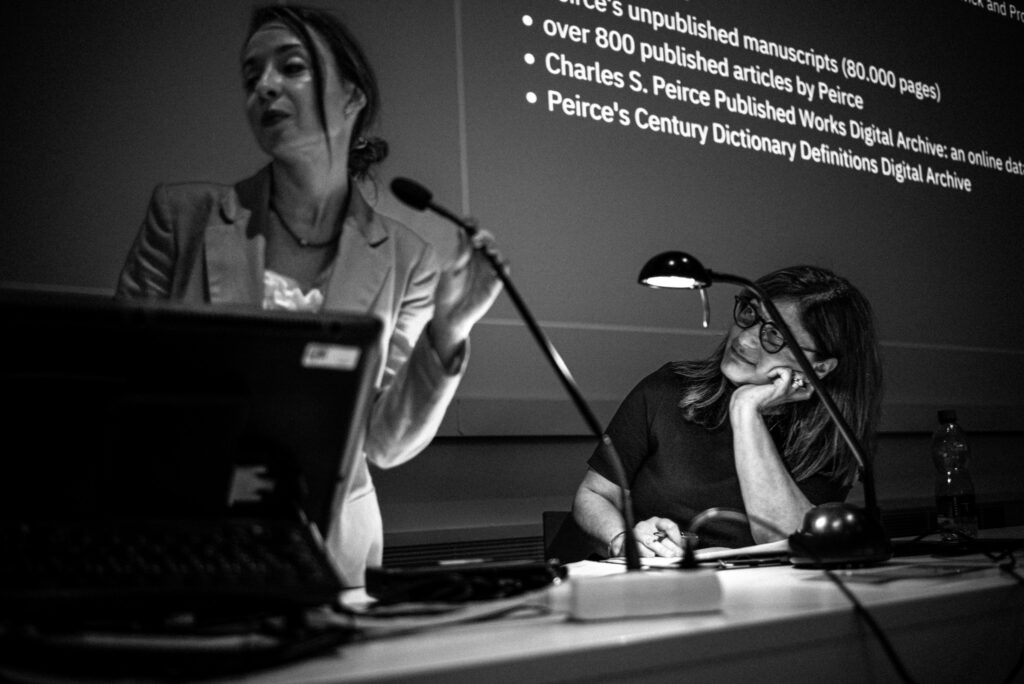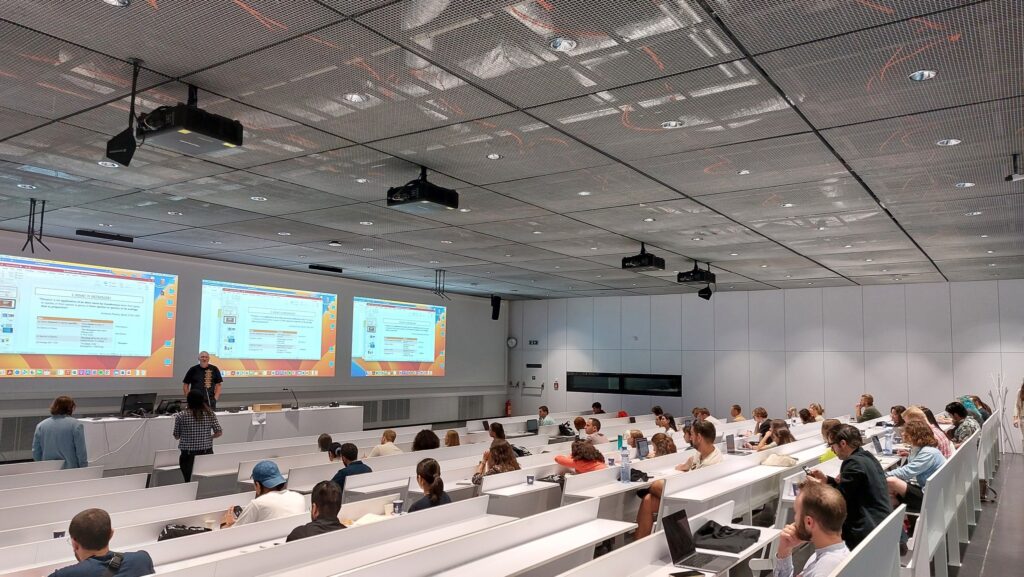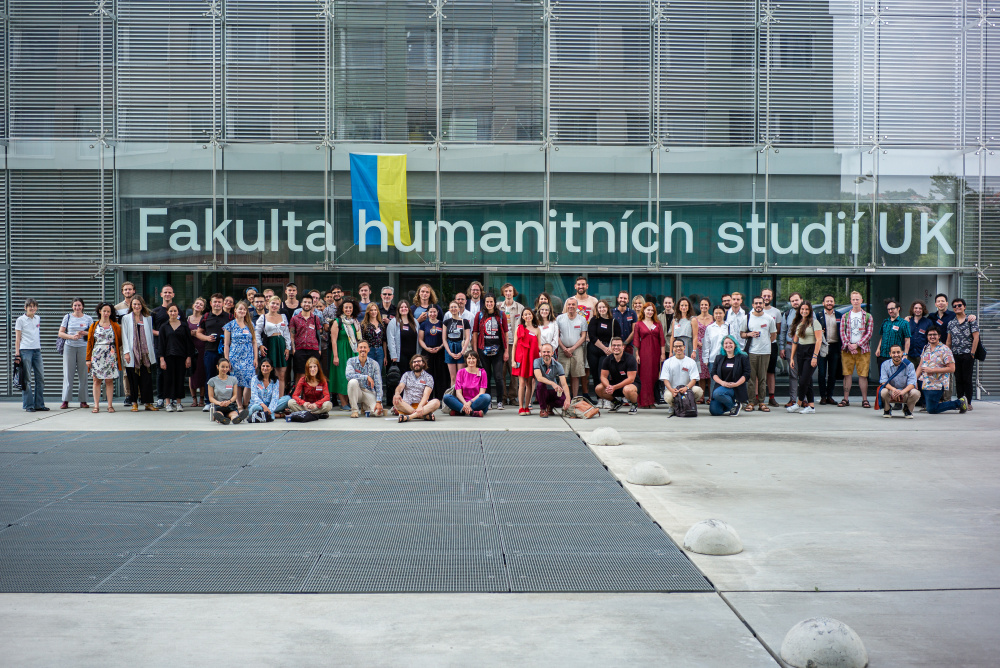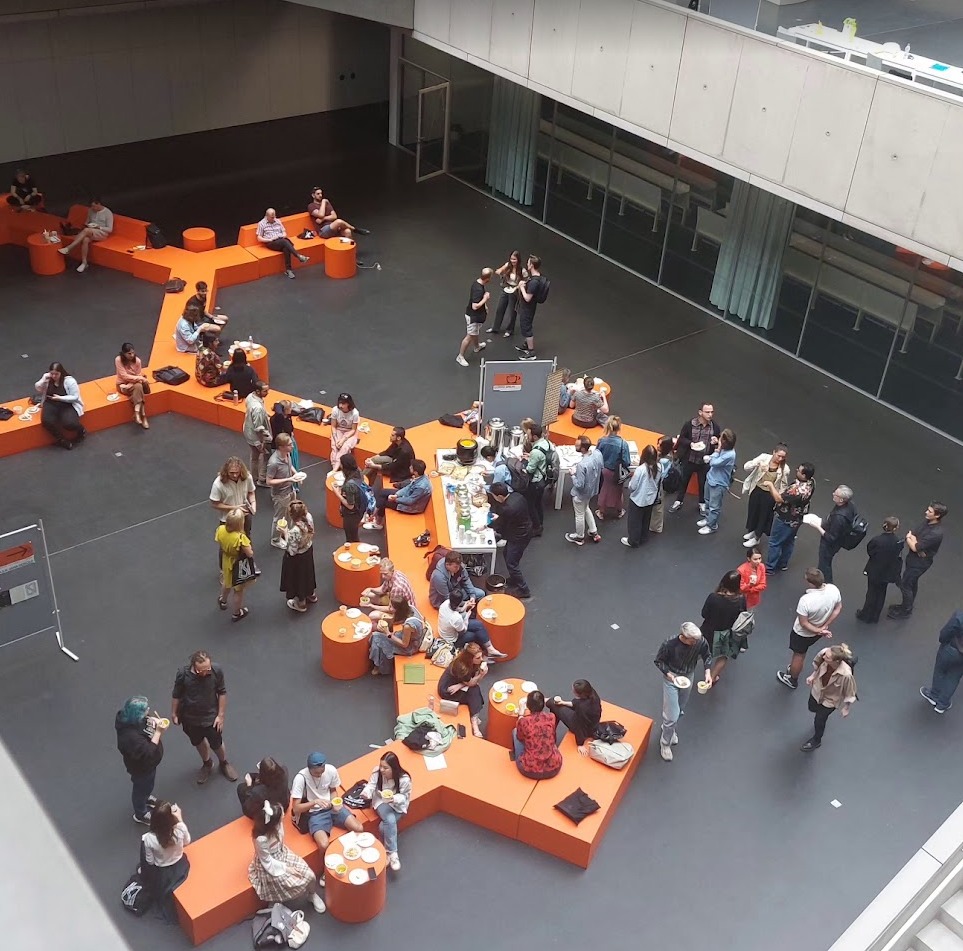Call for Applications 2024/25
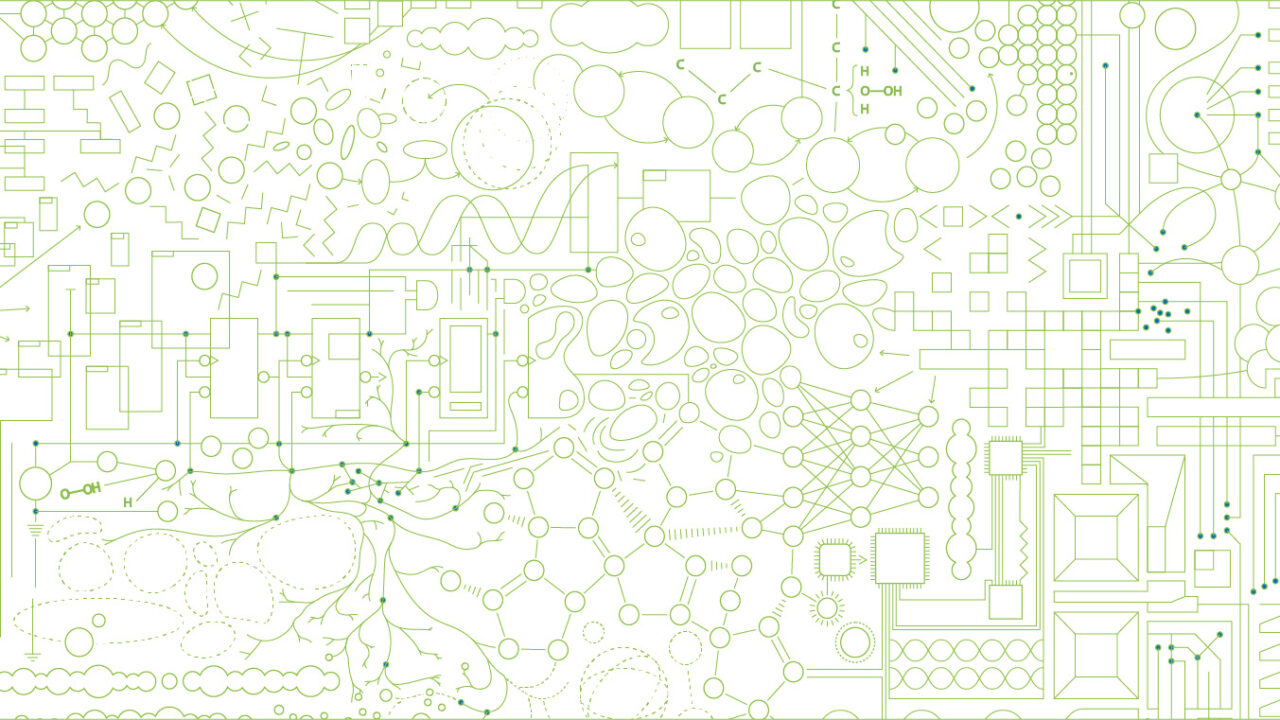
We are excited to announce that the call for applications for fellowships at c:o/re in 2024/25 is now open.
The Käte Hamburger Kolleg: Cultures of Research (c:o/re) is offering ten fellowships to junior and senior researchers from the humanities, social sciences or STS as well as from natural, life and technical sciences for the academic year 2024/25.
The fellowships can start between June and October 2024.
You can find all information about the current call for applications on this webpage.
Applications must be submitted via our online application platform. The deadline for applications is December 31, 2023.
If you have questions regarding the application process, please have a look at the FAQs on our website or write us an email at info@khk.rwth-aachen.de.
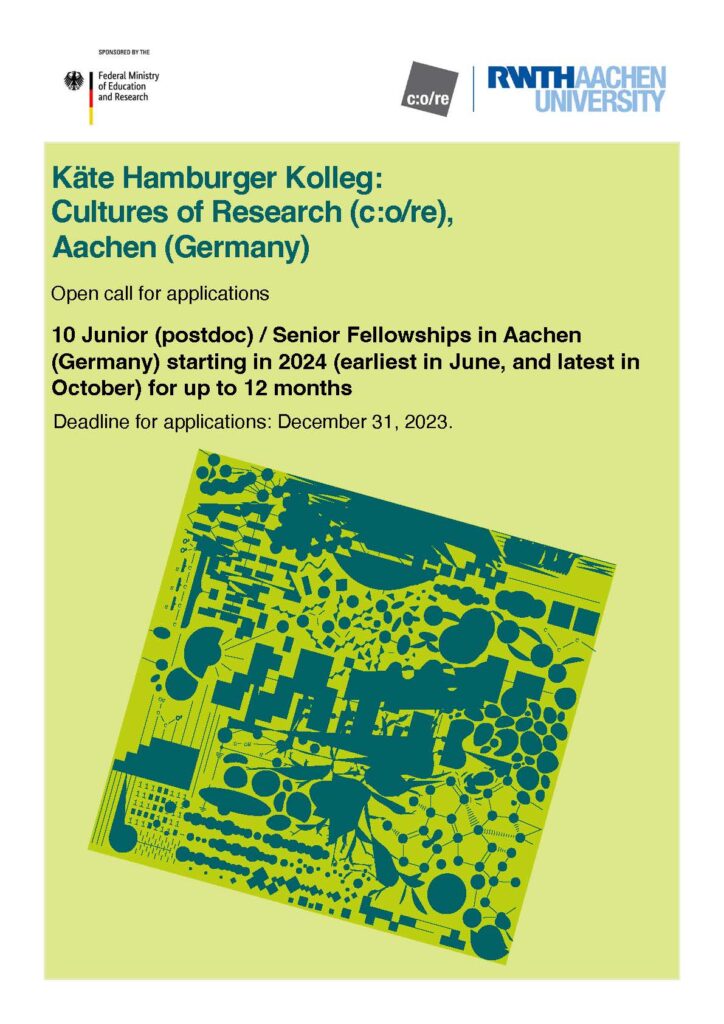
c:o/re meets “Leonardo”

We are excited that the Käte Hamburger Kolleg: Cultures of research (c:o/re) is participating in the “Leonardo” project at RWTH Aachen University this winter semester.

Together with some of our fellows, c:o/re is offering the course “Engineering Life. Imaginaries of Lifelikeness”, which will explore the topic of “Lifelikeness” from different disciplinary perspectives, such as the life and technical sciences, the humanities, art history and science journalism.
The “Leonardo” lectures are open to all RWTH students, regardless of which discipline they study and therefore share the same goal as c:o/re in promoting lecturers and students to use their subject-specific knowledge in a broader context to investigate the challenges within society and science.
You can read more about the “Leonardo” project on their website.
Lifelikeness… from scratch: Director Gabriele Gramelsberger opens the new c:o/re lecture series

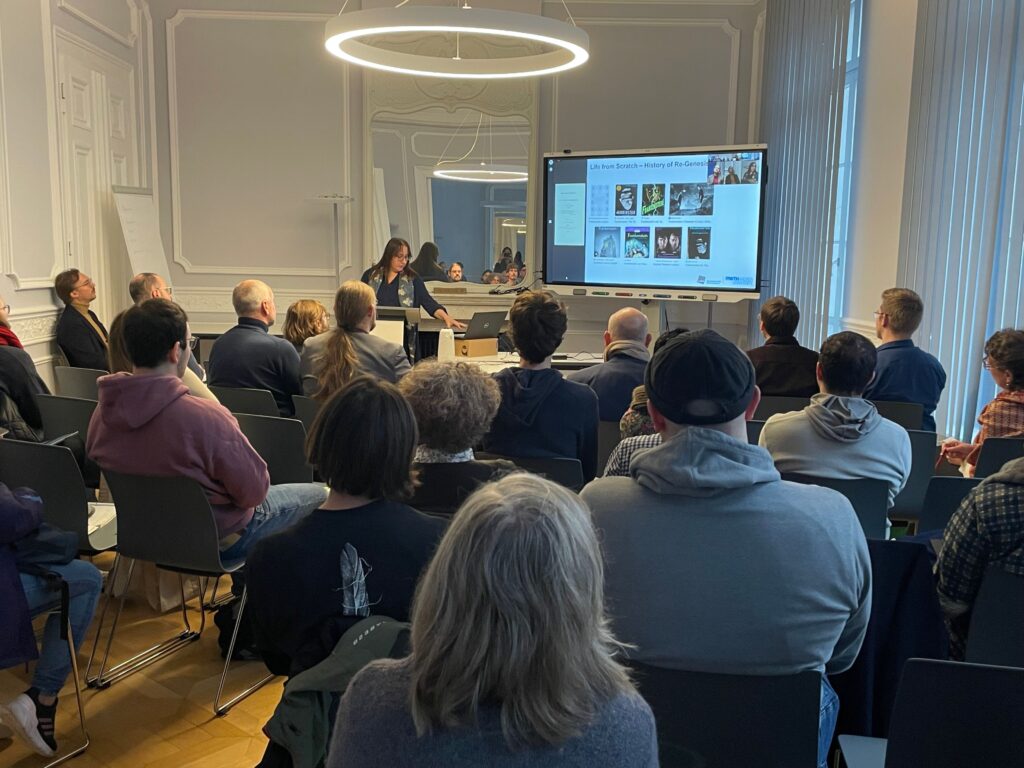
On October 25th, Professor Gabriele Gramelsberger, one of the two c:o/re directors, gave the first talk of the 2023/2024 c:o/re lecture series, which focuses on the slippery but important notion of lifelikeness. The title of her talk, Life from scratch announces an interesting lecture series bringing together arguments from the life sciences to philosophy and all the way to engineering and computational science, where we can but expect the best practice of academic traditions: controversy, that unavoidable result of free and critical thinking.
This semester’s c:o/re lecture series is also part of the Projekt “Leonardo”: Interdisciplinary Teaching for Creative Minds . This project offers interdisciplinary courses on social challenges broadly, offering RWTH Aachen University students from many disciplines the possibility to learn about the eclectic and interdisciplinary work of researchers from various departments.
In this way, c:o/re contributes to the teaching offer of and inter-departmental dialogue at RWTH Aachen University. Debating lifelikeness, as a topic emerging at the interface of the humanities and social sciences, natural sciences and engineering, is one of the contributions that c:o/re brings to foster dialogue across faculties and bring together local scholars and its research fellows.

In this first talk of the series, Professor Gramelsberger inspired a lively discussion among c:o/re researchers and colleagues and students from many departments across RWTH Aachen University. She offered a broadly informative and encompassing overview of synthetic biology, with a focus on the enduring human fascination to solve the puzzle of life, such as pursued currently in astrobiology.
First, Professor Gramelsberger took the audience on a journey through the history of biology, particularly as seen from the contemporary vantage point of ReGenesis. The talk proceeded from early efforts to obtain (a)biogenesis in laboratories to contemporary experiments and efforts, such as revolving around the concept of the domain Synthetica.
Introducing the main guiding concepts, such as abiogenesis, Professor Gramelsberger explained that the ideal to create life is, probably, as old as humanity. She pointed to the enduring cultural fascination with creating life, as displayed in novels like Mary Shelley’s Frankenstein (1818) and films like Fritz Lang’s Metropolis (1927), or in Jewish mythical folklore of the Golem, the animated mythical creature created from mud that is said to have roamed 16th-century Prague. Cultural imaginaries of humans creating new life have taken inspiration, of course, from state-of-the-art scientific undertakings. For example, Mary Shelley likely took inspiration from Luigi Galvani’s experiments in the 1780s. Much later, in 1952, the type of thinking falling under the label electric spark theory was put to the test in the Miller-Urey experiment (see Miller 1953), with impressive results. Researchers observed the formation of amino acids by applying electricity to water (H2O), methane (CH4), ammonia (NH3) and hydrogen (H2), a setting meant to simulate the conditions, as thought at the time, of the prebiotic Earth atmosphere.

Having presented these ideas to the students, Professor Gramelsberger set the stage for an informative overview of the intellectual history covering the works of Jacques Loeb (1852-1924), Alfonso Herrera (1868-1942) and Stéphane Leduc (1853-1939).
An interesting realization that this history reveals is that the biological problem of life keeps slipping. Every time when biological science finds the solution to what it construed as the question of life, it reveals that the question of life was misplaced. For example, merely creating an organic molecule from inorganic matter or protoplasm from mineral substances is not creating life. As spectacular as this achievement may be, the most important insight it provides is that merely organic molecules or DNA is not life, as we experience and recognize it. Hence, biology can be said to reveal what life is in a positive heuristics of increasingly understanding what life is not.
The talk then proceeded to present more recent molecular biology, as enabled by the genetic paradigm, and exemplified in the work of figures like Craig Venter or Stanley Cohen and Herbert Boyer. Professor Gramelsberger discussed recent efforts in the pursuit of De-novo organisms in an engaging manner, making the main notion here comprehensible for both fellow academics and postgraduate students. She offered an overview of the main types of De-novo approaches, namely Minimal genome, Biobrick (engineering) and Computer-aided design (CAD). This opened the stage for reflecting on cutting-edge and speculative considerations of the domain of Synthetica, as a new unit in the vocabulary of biological taxonomy. The talk raised important questions about the future of life, bio-hacking and genetic literacy, as one branch of new literacies. Here, Professor Gramelsberger noted the pioneering scholarship, such as George Church’s ReGenesis (2012), Amy Web & Andrew Hessel’s The genesis machine (2022) and Jamie Metzl’s Hacking Darwin (2019).
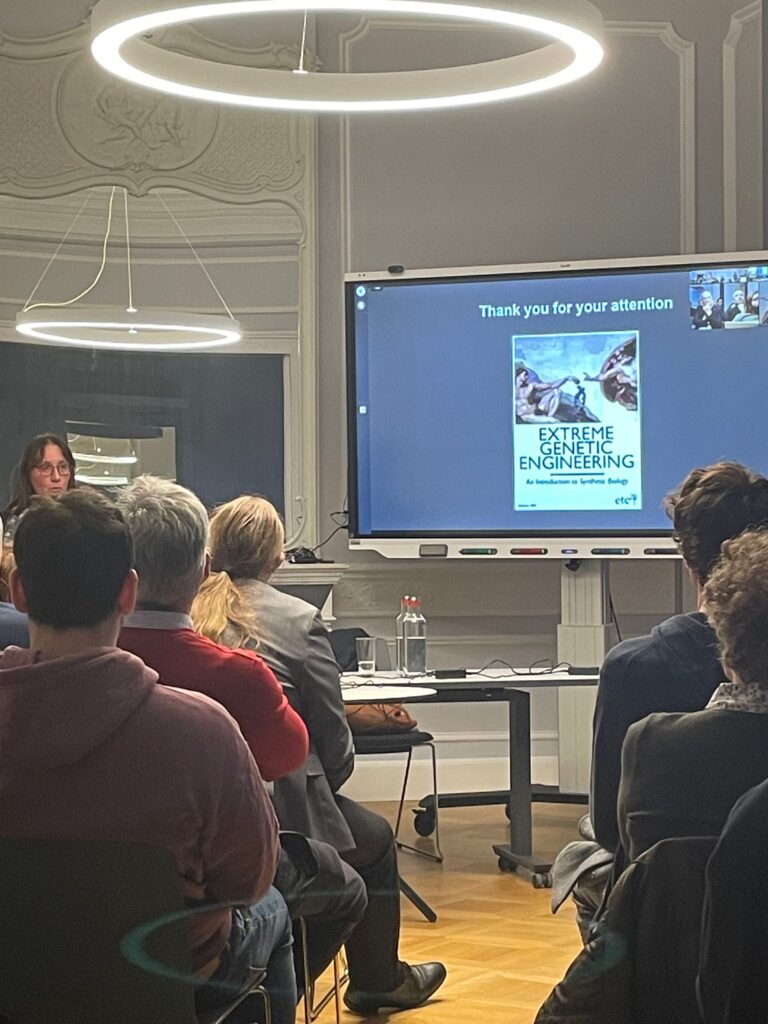
Overall, the talk fostered an interdisciplinary dialogue, also stiring the interest of students by reflecting philosophically on the many questions accumulated and meliorated through the history of (synthetic) biology. For example, the the role of the concept of oscillators was noted, across disciplines, in ushering a process instead of object ontology. Questions and discussions covered the conceptualisation of genetic engineering and synthetic biology, mechanical reductionism and vitalism, industrial and economic motivations and, of course, a wide array of ethical considerations.
With this intriguing introduction, we look forward to the next talks in the c:o/re Lifelikeness series, which also addresses students through Projekt Leonardo.
References
Church, George. 2012. ReGenesis: How Synthetic Biology Will Reinvent Nature and Ourselves. Basic Books.
ETC group. 2007. Extreme genetic engineering: An introduction to synthetic biology. ETC group.
Metzl, Jamie. 2019. Hacking Darwin: Genetic engineering and the future of humanity. Sourcebooks, Inc..
Miller, Stanley L. 1953. Production of amino acids under possible primitive earth conditions, Science 117 (3046): 528-529.
Webb, Amy, Hessel, Andrew. 2022. The Genesis Machine: Our Quest to Rewrite Life in the Age of Synthetic Biology. Hachette.

Arbeitsgruppe: Technofeminismus. Feministische Perspektiven auf Wissenschaft und Technik

Ist Technologie neutral oder kann sie sexistische Vorurteile beinhalten? Welche Formen der Ausbeutung von FLINTA* (Frauen, Lesben, intergeschlechtliche, nichtbinäre, trans und agender Personen) entstehen durch digitale Arbeit? Was lehrt uns der Schwarze Feminismus über digitale und technische Formen der Ausbeutung und Geschlechterungerechtigkeit? Können wir feministisch handeln und Objektivität in der Wissenschaft beanspruchen?
Ab dem kommenden Semester wird es an der RWTH Aachen eine Arbeitsgruppe geben, in der diese Fragen gestellt werden. In der Gruppe wird anhand von Texten oder Videobeiträgen diskutiert, die von den Teilnehmenden der Arbeitsgruppe vorgeschlagen werden können.
Erstes Treffen: 17.10.23 um 15.00 Uhr in der Theaterstraße 75, Aachen.
Die Gruppe ist offen für alle Studierenden und Dozent*innen der RWTH Aachen. Es sind keine Vorkenntnisse erforderlich. Wir bitten nur um eine Anmeldung unter: technofeminismus@khk.rwth-aachen.de
Bei Fragen, Anregungen oder Ideen kannst Du uns gerne eine E-Mail schreiben.
New book – Relational and multimodal higher education: Digital, social and environmental perspectives
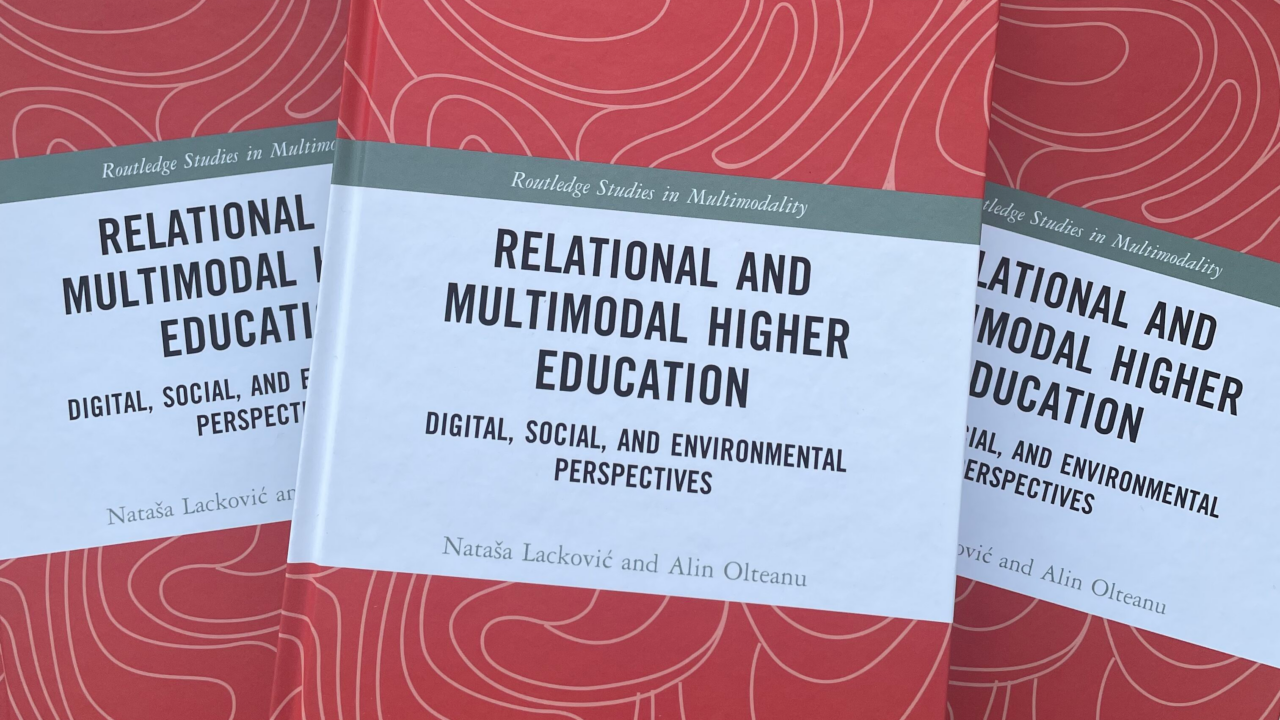
The new book by Dr. Natasa Lackovic (Lancaster University) and c:o/re team member Dr. Alin Olteanu has just been published in the book series Routledge Studies in Multimodality, managed by Professor Kay O’Halloran.
The book Relational and Multimodal Higher Education: Digital, Social and Environmental Perspectives proposes a relational turn by conceptualizing knowledge and pedagogy as relational and multimodal, analyzed through three dimensions of relationality: social, technological, and environmental.
The volume draws on interdisciplinary approaches that make a case for integrating these interconnected and distinct dimensions in higher education theory and practice. Its novelty lies in combining such a variety of perspectives with Peircean semiotics to explore what it means to learn and live relationally. It emphasizes the importance of critical reflection, rooted in an environmental understanding of knowledge and digital media. This approach integrates materiality, place, and space in higher education, positioning caring, critically reflective and imaginative interactions and interpretations as central for knowledge growth. The volume features practical case studies of relational pedagogy through dialogues with diverse higher education practitioners, which embrace expression and creation through more than one dominant modality of communication and being. The book envisions students and educators as relational agents, with relational awareness and responsibility, aware of their multimodal identities. It highlights how a relational multimodal paradigm can serve as a way forward for universities to address global challenges concerning social, (post)digital, and environmental futures.
This innovative book should be of interest to scholars, students, teachers, and policymakers in higher education, semiotics and multimodality, as well as postdigital, sociomaterial and futures studies.
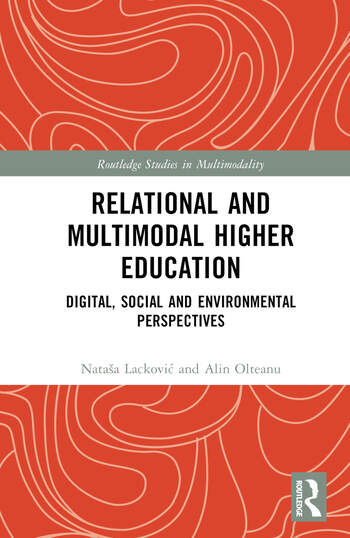
Lecture Series Winter 2023/24: Lifelikeness
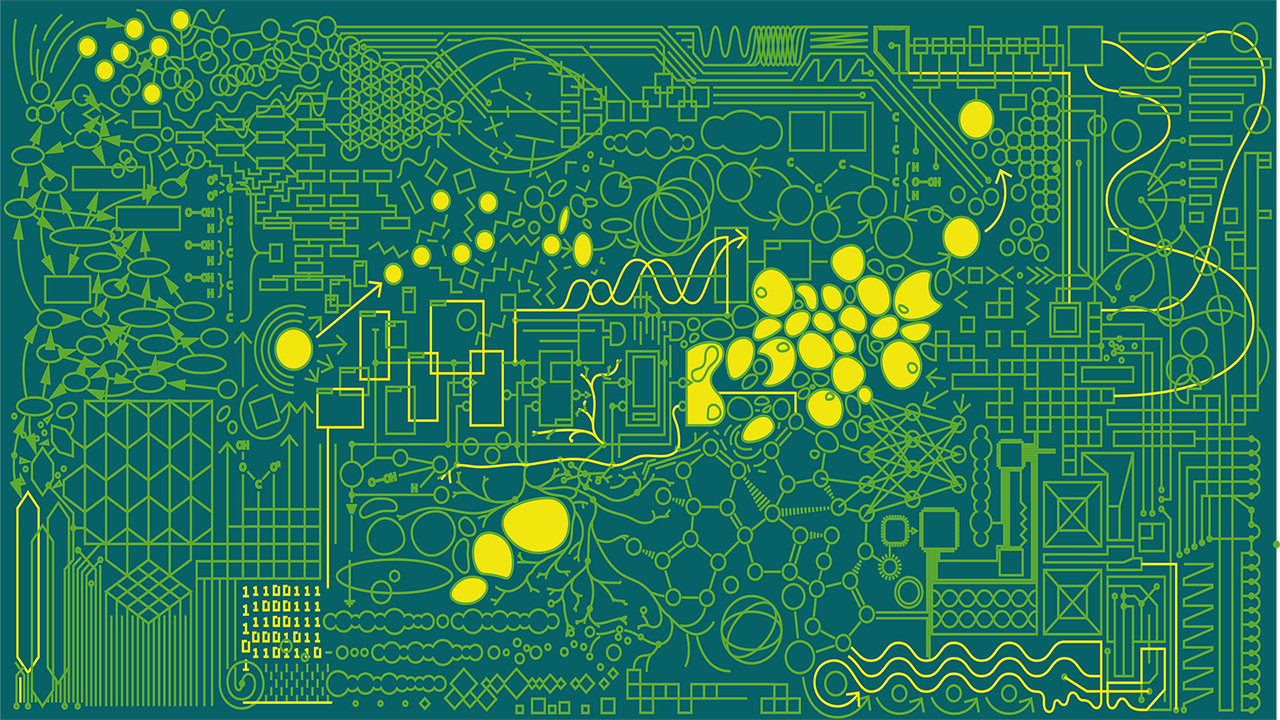
We are happy to announce the program for our Lecture Series during the winter 2023/24. The topic of this semester’s series of lectures is Lifelikeness.
Our invited speakers will explore Lifelikeness through different disciplinary perspectives, such as life and technical sciences, humanities, art history and science journalism.
Please find an overview of the dates and speakers in the program.
The lecture series takes place in presence and online from October 25h, 2023 to February 7th, 2024, Wednesdays from 5 to 6.30 pm. Please register with events@khk.rwth-aachen.de.
| 25.10.2023 Gabriele Gramelsberger (RWTH Aachen University): Life from scratch | ||
| 08.11.2023 Andrei Korbut (University of Bremen, c:o/re Fellow): Robot, a Laboratory “Animal”: Producing Knowledge through and about Human-Robot Interaction | ||
| 22.11.2023 Emre Neftci (Forschungszentrum Jülich): Neuromorphic Computing: Inspiration from the Brain for Future AI Technologies | ||
| 06.12.2023 Esther Leslie (Birkbeck, University of London): Art’s Mediation as Remediation: On Some Artworks and their reuses of Toxic Materials | ||
| 10.01.2024 Massimiliano Simons (Maastricht University): Towards an Ecology of Technoscience | ||
| 24.01.2024 Ben Woodard (ICI Berlin): Flowers for Agouti: Epigenetics and the Genealogy of Uplift | ||
| 07.02.2024 Michael Friedman (Tel Aviv University, c:o/re Fellow): Bio-inspired Materials and Dreams of Inspiration |
Lecture and discussion with Phil MacNaghten: The knowledge politics of making anticipatory knowledge
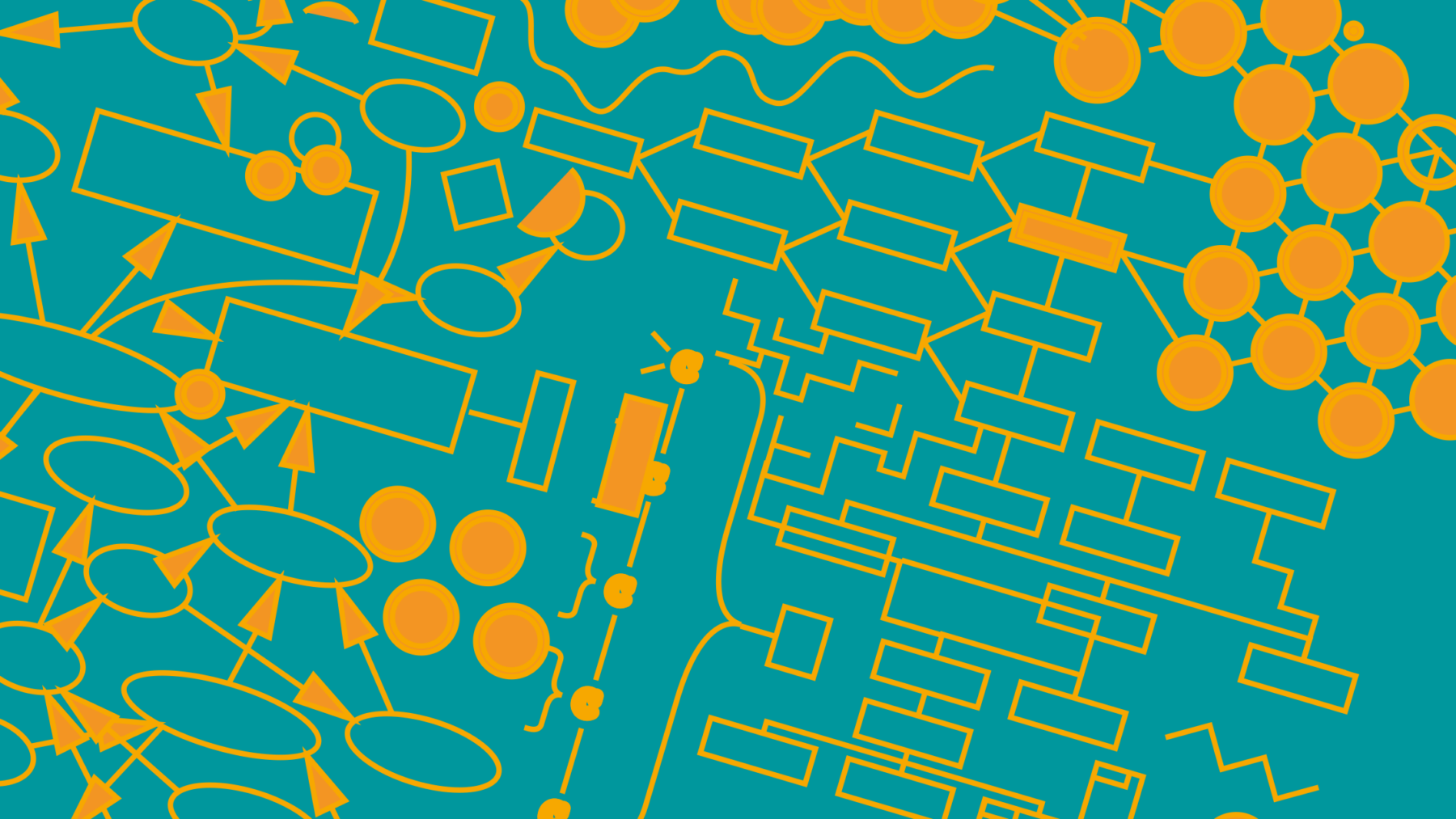
On October 12, Phil Macnaghten will give a talk at c:o/re about The knowledge politics of making anticipatory knowledge. This event is part of the 5th STS-Forum at RWTH Aachen University.

Tagung: Briefe des 15. Jahrhunderts als Quellen für interkulturelle Kontakte zwischen Italien und dem Osmanischen Reich

From the 19th to 20th October 2023, a conference on “Briefe des 15. Jahrhunderts als Quellen für interkulturelle Kontakte zwischen Italien und dem Osmanischen Reich” will take place at c:o/re, organized by Florian Hartmann.
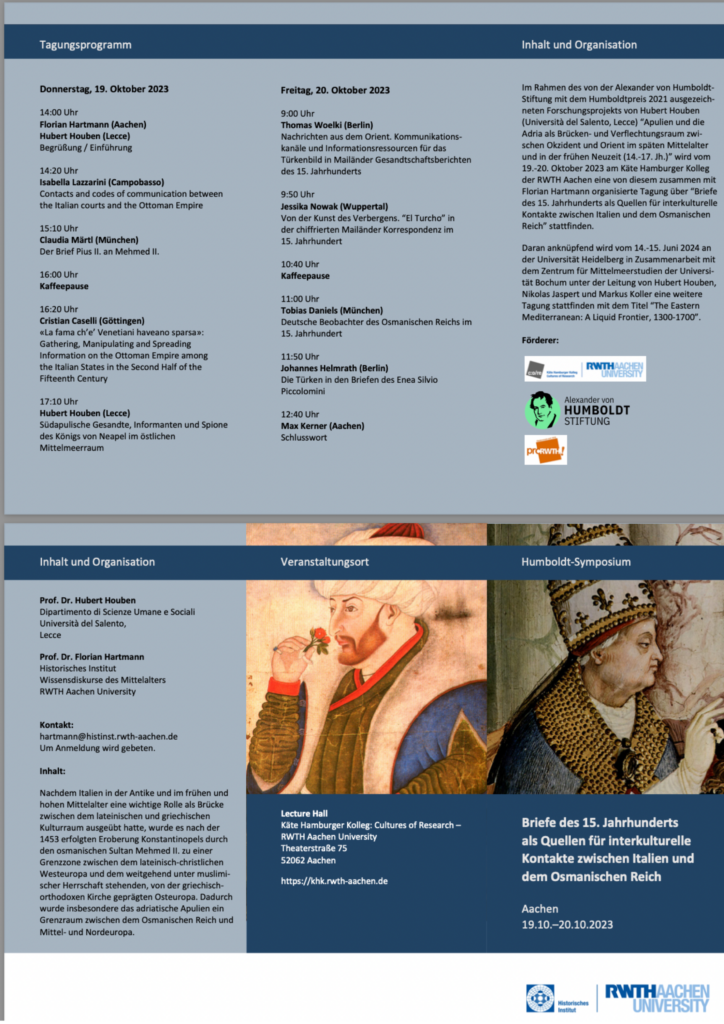
Supercharge the real-world impact of Research, Innovation and Enterprise with brand building methodologies

IAN BATES

If there’s one word I hear regularly among the academic and innovation community in the UK and mainland Europe it’s impact.
What do we mean by impact?
A common understanding has emerged, along with a standardised method of measuring real-world impact. The United Nations Sustainable Development Goals (SDGs) have become a touchstone to evaluate performance and are used by organisations like the Times Higher Education University Rankings. And usefully, the Research Excellence Framework (REF) has defined impact as … “the effect on, change or benefit to the economy, society, culture, public policy or services, health, the environment or quality of life, beyond academia.” (in Guide to the REF results).
So it’s about how cutting-edge research is unlocked to release its full potential and make positive contributions to global challenges. That gets us all on the same page. But can practices normally associated with commercial brand building contribute to fast-tracking real-world impact from the research at institutions such as RWTH Aachen University?

Ian Bates
Ian Bates is the Founder and Creative Partner at Firehaus, the brand consultancy for higher education institutions, enterprise hubs and spin-outs. He worked with many global blue-chip brands and has created, reviewed and judged thousands of creative campaigns over a 30+ year career. He has helped found, build, merge and sell agencies – leading multi-disciplinary creative teams. He was a tutor for the Institute of Data & Marketing, a GRT Trustee and a speaker at more events than he can remember, including Cannes. His awards include the prestigious DMA Grand Prix. He has judged for D&AD, The Drum, DMA & BIMA among many others.
Let’s start with what we mean by brand, so we remain on the same page.
A brand is not a logo or a colour palette. It is not something captured in a book or powerpoint. Insightfully Calin Hertioga and Johannes Christensen, define a brand as“A brand is the sum of all expressions by which an entity (person, organization, company, business unit, city, nation, etc.) intends to be recognized.” (in Interbrand).
Critically, these expressions are communicated – in words, pictures and behaviours. Many will talk about this in terms of anthropomorphization. I’m going to boldly suggest that what is potentially holding back research from making impact is not funding. It’s being able to communicate beyond the confines of academia to engage policymakers, corporate partners, investors and yes – the media. It is a matter of science communication. And that’s why approaches used in brand building are important tools for researchers to embrace.
Of course, not every piece of research needs to become a ‘brand’. But if the intention is for your school, institute, academic consortium or research team to engage and influence a variety of audiences over time and deliver real-world impact, then creating distinct brand associations in their hearts and minds will increase recall, engagement and efficiency in communications.
That’s called brand positioning.
Future partners and associates should also experience brand behaviours that are consistent with this identity. There’s no point in talking about being collaborative for instance if, in reality, everyone experiences quite the opposite.
In business the imperative to communicate with a wide range of people (even in niche markets) forces organisations to be clear about why they deserve their attention (which is in short supply), and their hard-earned cash (in increasingly short supply).
So, thinking of academic research through these optics leads to problematising through the questions:
- Why do you deserve our attention (or ‘what problem are you solving’)?
- Why do you deserve our funding?
As one might imagine, the people asking these questions aren’t waiting for the contents of a thesis to drop into their inbox in response. A satisfying answer requires a story – a narrative that your audiences (and for research there’s always more than one) can see themselves as part of, a picture to understand and respond to – intellectually and emotionally. Far from dumbing down research this implies increasing impact, its value and frankly, without any contradiction, fame.
A cohesive brand identity will increase the likelihood of maintaining a culture of innovation and…
- intensify the clarity and communication of an institution’s purpose, mission and vision;
- inspire emotional engagement;
- invigorate internal stakeholders.
For research to impact a wider audience than merely academic:
- It needs a simple, distinct story and visual short-hand;
- It needs positioning in contemporary culture(s);
- And it needs an emotional heart.
I acknowledge there is a tension between the universities as hives of education, research and personal development on the one hand, and as engines of commercial enterprise on the other. This tension can lead to a reluctance in embracing methodologies normally applied to business. Brand building shouldn’t be one of them.
There is significant value to be gained from adopting approaches commonly used in commercial organisations. Brand methodologies can not only improve communication but also help to lay the organisational and cultural foundations that support continued innovation and supercharge research and enterprise, leading to corporate partnerships, spin-outs and real-world impact.
I experienced an example of the positive impact created by articulating a Purpose, Mission and Vision within one large university school. After a simple 60 minute on-boarding process, we engaged over 120 academics in developing new ideas for how they’d bring their fledgling new brand to life – with some truly innovative results affecting course structures, research focus, corporate partnerships and professional development.
Changing the world, even a little part of it, for the better is too important for the impact of transformative research to remain in an academic journal paper or the confines of an institution. It’s terrible to think that the answers to some of the world’s most intractable problems are locked away when they could be out there to implement, further exploration and multiple interpretations. Communication lies at the heart of this challenge. Brand building methodologies might help universities get there.
Mini-case studies
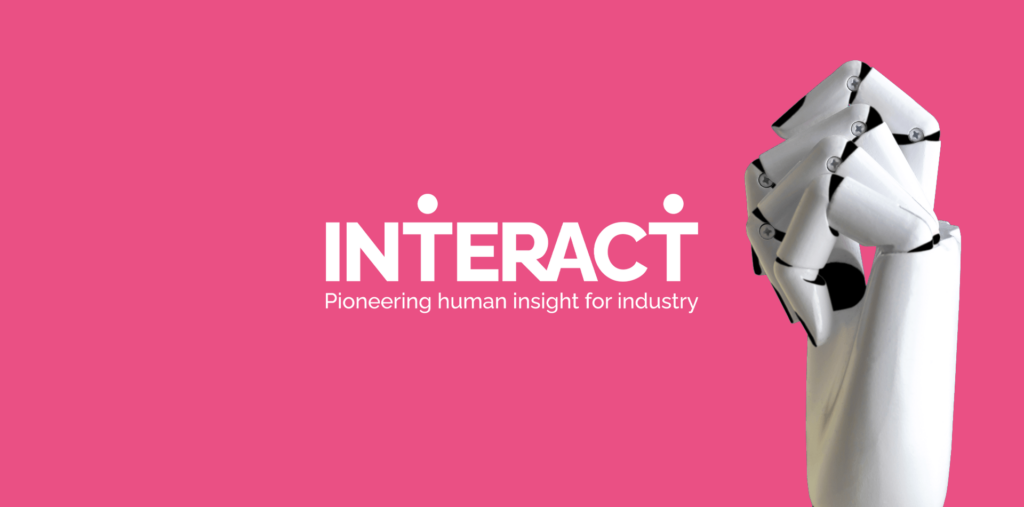
Interact – Pioneering Human Insight for Industry
A Made Smarter Innovation funded, Economic and Social Research Council-led network that needed a narrative to speak to three distinct audiences – researchers, industrial digital technology (IDT) providers and manufacturers. By articulating a shared sense of purpose and creating a compelling name and narrative, InterAct has rapidly expanded its reach and built a distinct brand identity, developing hundreds of connections within the wider manufacturing ecosystem. It has now committed over £1.2 million of funding to 37 different research projects, incorporating dozens of UK universities, with the aim of creating human insight focused outputs to inform a rapidly growing community of policymakers, IDT providers and manufacturing businesses.

Discribe – Imagining Secure Digital Futures
This is a groundbreaking social science-led digital security research programme. Social sciences are woefully underrepresented in the sector, despite potentially having a significant role to play. With a redefined narrative and proposition it will shortly become part of a new University of Bath institute.

Quantum Frontier – Where Business Breaks Boundaries
Initiated by University of Bristol this project will shift the perception of what’s possible at the extremes of commercial innovation. The brand we created collaboratively with the team will foster collaboration between researchers, corporate partners and civic authorities to sit at the cutting edge of global innovation and enterprise.

Radii Devices
This academic spin-out was finding it difficult to articulate the global applications for their research. An intervention using brand building principles has given the team a new-found confidence in communication and unlocked the story that has opened further investment and potential markets in Europe, the UK and US.

